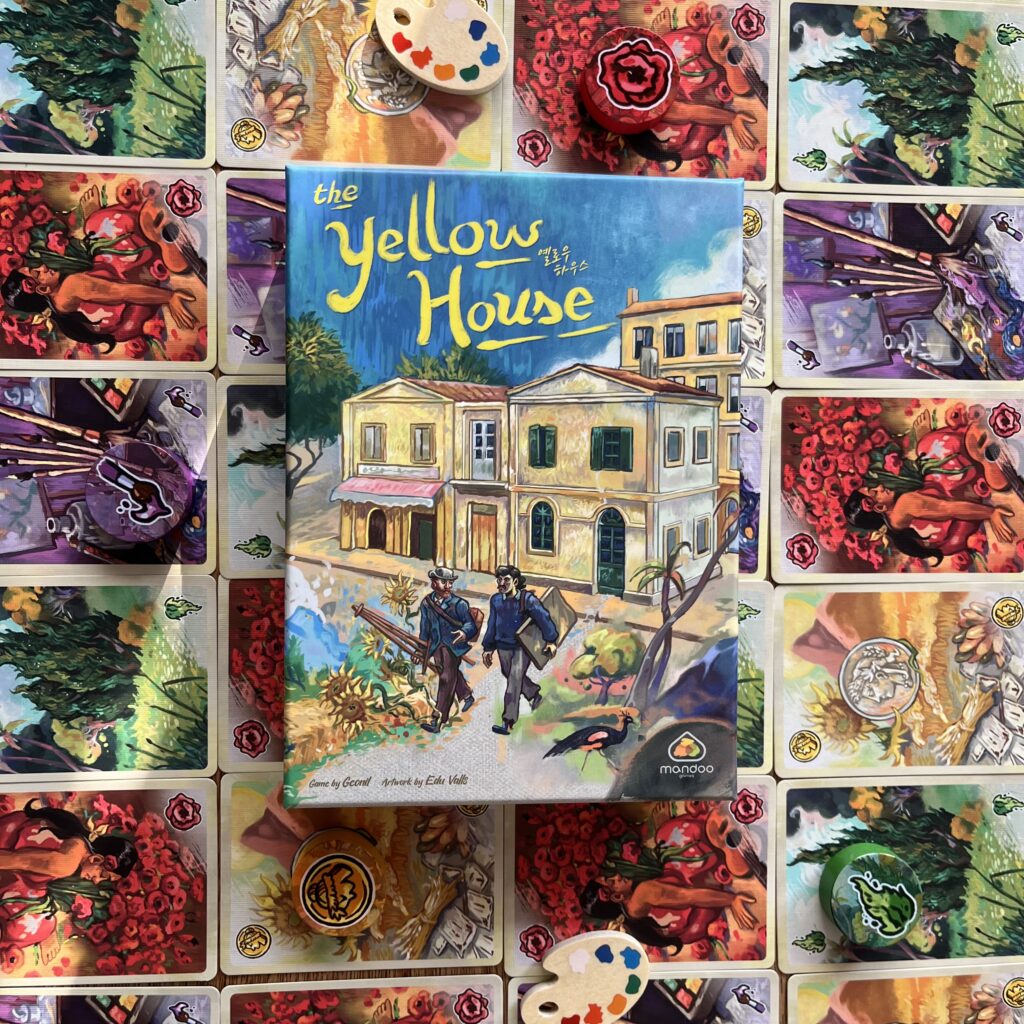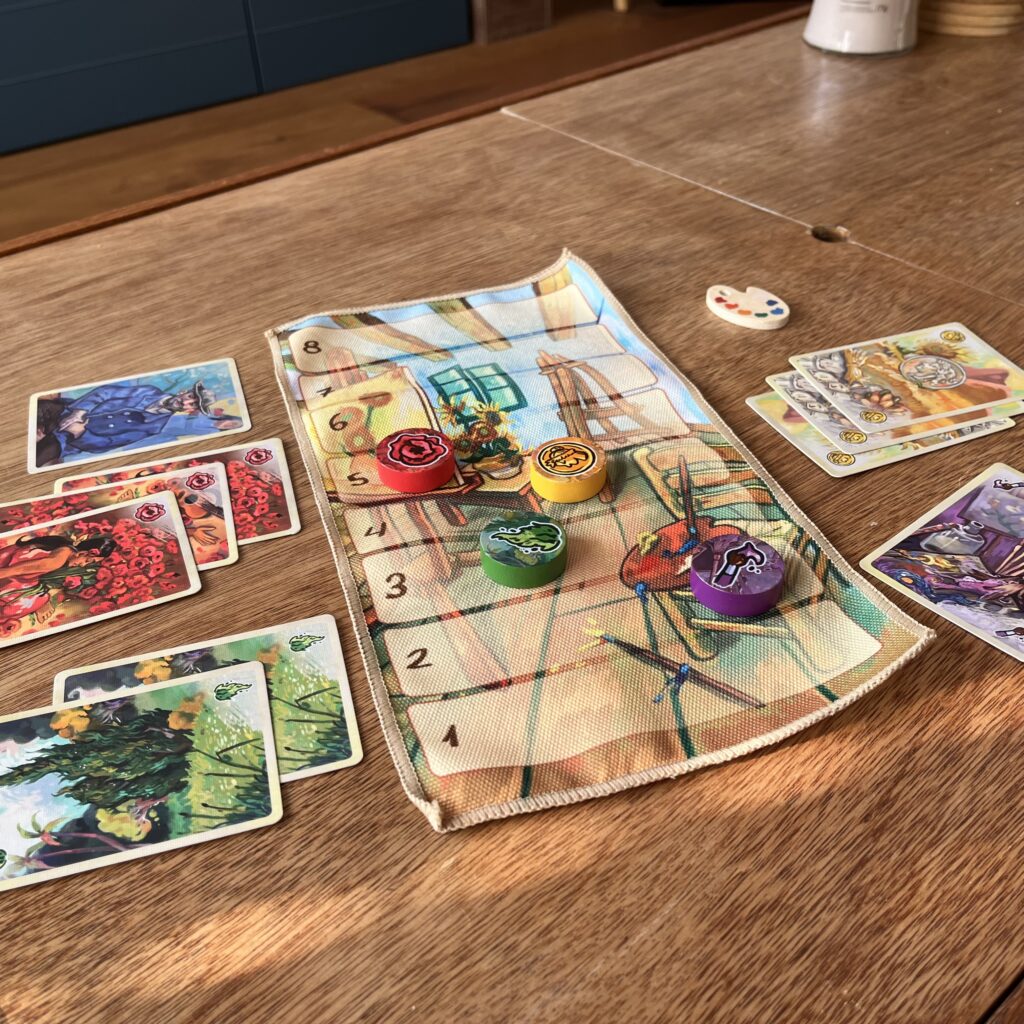Experts like to discuss their field with each other, and often the discussions about the smallest details are the most heated. My neck hair jumps straight up just thinking about the legal discussions about the interpretation of the relativity principle in Dutch law. Although discussions among lawyers can be fierce, few are as fierce in their discussions as artists. They sometimes seem to argue for the sake of it. So did Van Gogh and Paul Gauguin when they lived together in the Yellow House.
Background
In the game the Yellow House, players assume the role of two discussing artists in the eponymous house of one of Vincent van Gogh’s paintings.

In 1888, the painter Van Gogh – better known to you board game playing experts, I’m sure, for the museum of the same name in Amsterdam where you could (not) get special Pikachu cards a few years ago – rented four rooms of a yellow house in Arles, France. Van Gogh’s goal was to get like-minded artists to move into the house to enjoy the arts together. Soon Van Gogh would realize that – like himself – artists are stubborn. Paul Gauguin moved into the house, and it seems the two could argue quite fiercely.
At the height of one of the discussions, Van Gogh confronted Gauguin with a razor. Gauguin managed to escape, but it was not a sign of a cozy friendship. Incidentally, this was not the most infamous thing Van Gogh managed to accomplish with a razor.
Gameplay
In the game, players try to win several rounds of debates. Each round consists of several debates and the winner of a debate gets to start the next debate. As soon as a player runs out of cards (arguments) in hand during a debate, this player has the last word during the round and this player takes this last card for points. Once a player has won two same cards or three random ones, this player has won.
In the center of the table is a mat and on the mat are discs symbolizing the four subjects: money, passion, skill and inspiration. Players are dealt 12 cards at the beginning of the round with which to conduct their arguments.
The starting player of round (any player in the first round and then the player who won the previous round) may play a card first. The succeeding player may not play another card of the same color. Successive cards may be played only if the marker is higher on the mat than the previous argument. To move the marker, players can strengthen their arguments by playing more cards of the same color or by playing support cards.

A debate ends when all four types of arguments have been played or if a player cannot or does not want to play. The player who last played an argument has won the debate and may start the next debate. A round is over when a player has no cards and thus has won that round.
Concluding
The Yellow House offers an interesting twist on a trick taking game. There are cards in four colors and the cards have no values. Whether players get to play a color depends on the position of the color on the mat in the middle of the table. As a result, you have to plan well to strengthen your arguments in order to be able to play many cards, but also still discuss various topics well. In addition, the design is particularly attractive.



